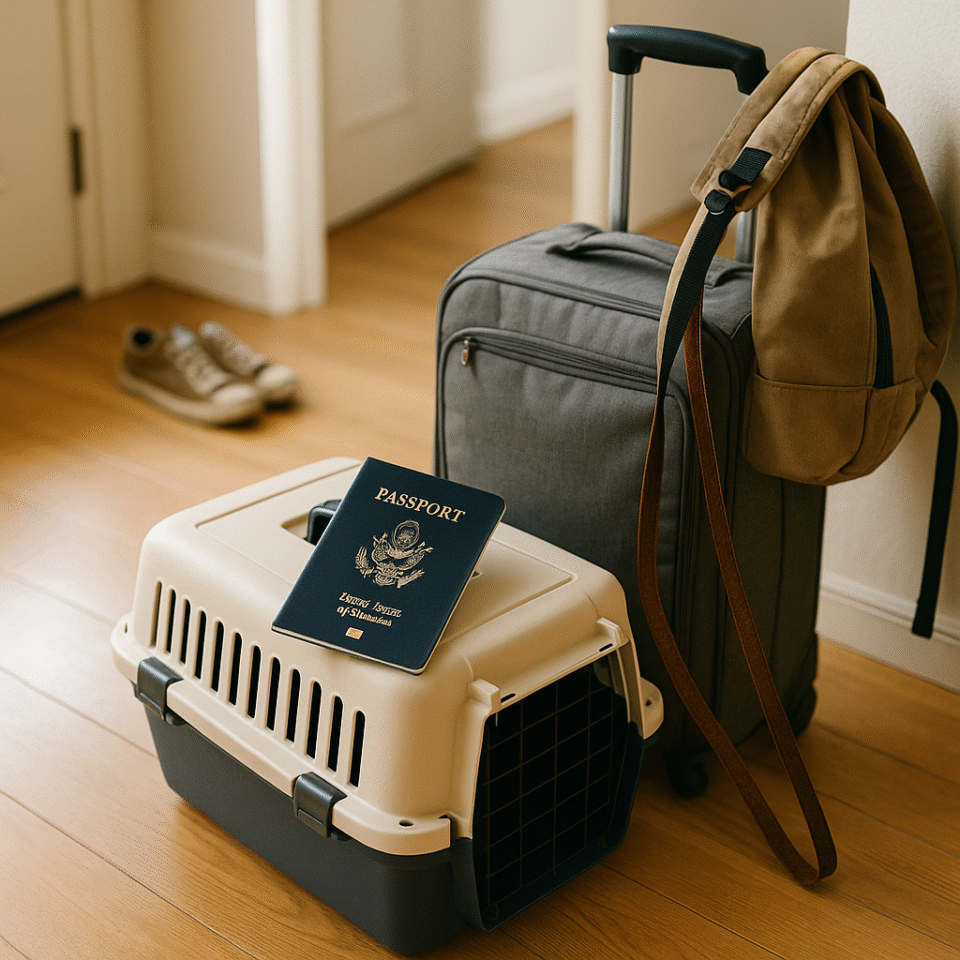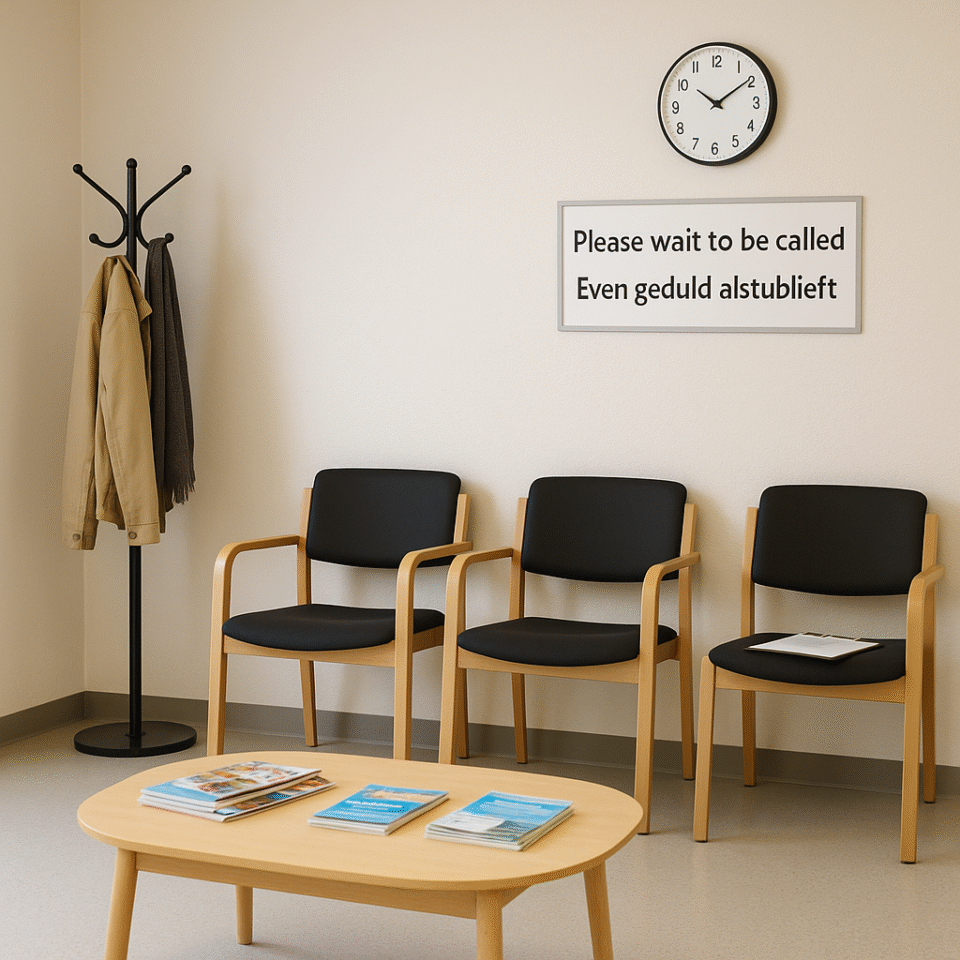For Americans contemplating a move to the Netherlands, leaving beloved pets behind is often not an option. The good news is that bringing pets to the Netherlands is entirely possible—as long as you prepare well in advance. With some paperwork, planning, and cultural adjustment, your dog, cat, or other companion animal can make the leap with you.
This guide outlines what American pet owners need to know before, during, and after relocating their animals to the Netherlands.
Start Early: Pet Relocation Takes Time
The single most important tip: begin preparation at least 4–6 months before your move. There are strict timelines and requirements, and rushing the process can cause real problems.
For dogs, cats, and ferrets, the Netherlands follows EU pet travel regulations. The basic requirements include:
- Microchip implantation
- Rabies vaccination administered after microchipping
- A 21-day waiting period after vaccination
- An EU Health Certificate issued by a USDA-accredited veterinarian and endorsed by your state’s USDA office
Depending on regulations at the time of travel, dogs may also need proof of deworming treatment.
Always confirm the most current requirements through the USDA APHIS Pet Travel portal.
Health Certificate and USDA Approval
The EU Health Certificate process causes the most stress for American pet owners. You’ll need to:
- Schedule a visit with a USDA-accredited vet shortly before travel
- Ensure all documents are in order and signed correctly
- Send them to your state’s USDA office for official endorsement
Timing is everything here. This paperwork is only valid for 10 days after issue, so coordination is critical.
Other Animals: Birds, Reptiles, and Exotics
If you’re relocating with a bird, reptile, or small mammal, your process may differ:
- Birds may require blood testing and extra documentation
- Reptiles and amphibians may need import permits if they are a protected species
- Small mammals like hamsters or guinea pigs are usually simpler, but still require a health certificate
Consult the Dutch NVWA for up-to-date information on exotic or less common animals.
Transportation Options: Cabin, Checked, or Cargo
Most pets arrive in the Netherlands via air travel. Depending on your airline, your pet may:
- Travel in-cabin (if small enough and allowed)
- Go as checked baggage (medium pets)
- Fly in climate-controlled cargo (larger pets)
Airlines vary widely in pet-friendliness. Some allow cabin travel for small dogs and cats, others do not. Look for transatlantic carriers known for safe and humane animal transport.
Professional pet relocation services can handle logistics, but they add significant cost.
Arrival and Customs in the Netherlands
If all paperwork is in order, your pet will not need to quarantine. At Schiphol Airport, customs officials will review your documents and confirm microchip information. The process is generally efficient if you’ve done your part in advance.
Once you’re settled, follow a few local requirements:
- Register your dog with the Dutch Pet Database (NDG)
- Check with your municipality about dog tax (hondenbelasting), which varies by city
- Update your pet’s microchip registration with your Dutch address
Pet-Friendly Housing Can Be Tricky
Finding a rental that allows pets in the Netherlands, especially in major cities, can be a challenge. Many listings state “geen huisdieren” (no pets), but this is sometimes negotiable, particularly with well-behaved animals and honest communication.
Start your housing search early. Let landlords know about your pets up front to avoid problems later.
Vet Care and Insurance
Veterinary care in the Netherlands is high quality and generally accessible. Most practices in larger cities will have English-speaking staff. Emergency services and animal hospitals exist but may be organized differently than what you’re used to.
Pet insurance is common and worth considering. Providers like OHRA, Petplan, and InShared offer policies with varying levels of coverage. Premiums are usually modest and can help offset vet costs over time.
Everyday Life with a Pet in the Netherlands
Here are a few cultural norms that might differ from what you’re used to in the U.S.:
- Dogs must be leashed in most public areas unless in an official “losloopgebied” (off-leash zone)
- Cleaning up after your dog is strictly enforced
- Dogs are generally not allowed in grocery stores but are welcome in many cafes and shops
Pet supplies are easy to find. Try shops like Maxizoo, Pets Place, or even Bol.com for online orders.
Public transport allows pets, with some limitations. Dogs are permitted on trains with a small fee; small pets in carriers usually ride for free.
When Bringing Your Pet Isn’t Possible
Sometimes relocation just isn’t an option—an elderly pet, health concerns, or logistical constraints might make the trip too difficult. If that’s your situation, make the decision with care. Seek out trusted temporary foster homes, friends, or reputable rehoming organizations. It’s hard, but doing right by your animal matters more than guilt.
Breed Restrictions and Other Considerations
While the Netherlands is generally pet-friendly, some breeds may face additional scrutiny or restrictions. Always check the most recent guidance from both Dutch authorities and your airline regarding breed-specific regulations.
Pets as Cultural Connectors
One of the unexpected joys of having a dog in the Netherlands? Instant social connection. Dog parks are places where conversations happen easily, even with limited Dutch. People notice each other’s pets, ask questions, and offer treats.
Bringing a pet abroad is a big undertaking, but they can also be a source of comfort, routine, and even community.
Final Thoughts
Bringing pets to the Netherlands takes work—but it’s not out of reach. With the right paperwork, realistic timelines, and a bit of cultural adjustment, your companion animal can settle in right alongside you.
It won’t always be simple. But for most expats, it’s worth every bit of effort to have a familiar, furry face by your side as you build your new life.








